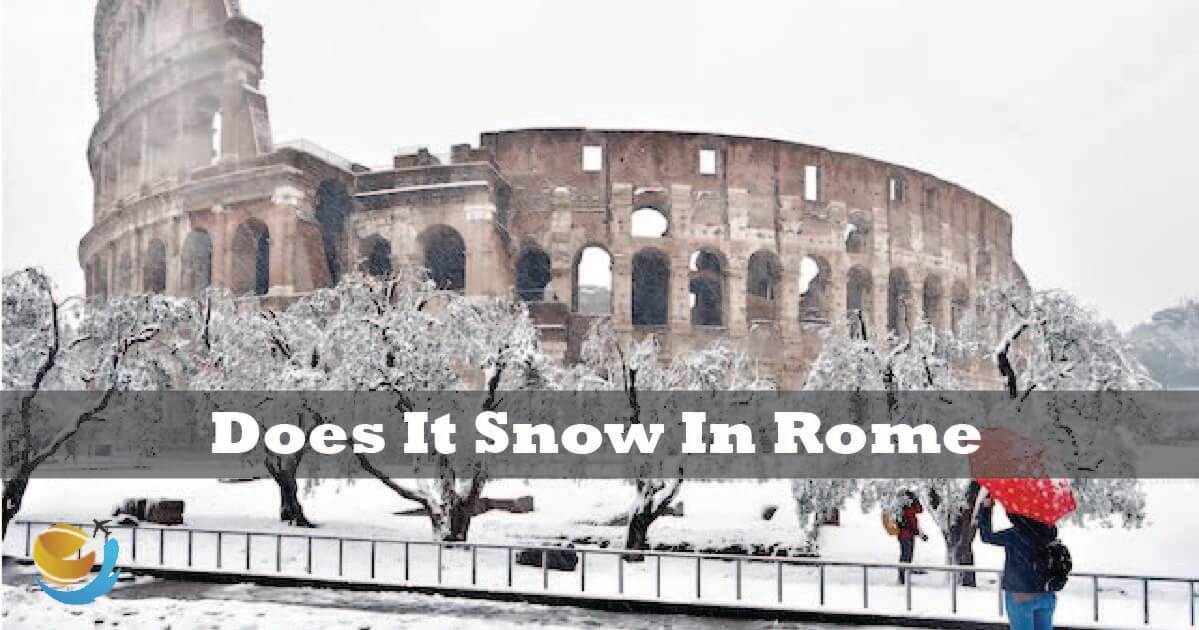Many Visitors want to know Does It Snow In Rome? The answer is Yes sometimes. Now we will delve deeper into Rome’s atmospheric tapestry, we uncover a complex interplay of climate, geography, and history that sheds light on this intriguing phenomenon.
Rome, the Eternal City, conjures images of ancient ruins, majestic fountains, and bustling piazzas. Steeped in a history that spans millennia, Rome stands as a testament to the endurance of human civilization and the resilience of its cultural legacy.
From the grandeur of the Colosseum to the solemn majesty of the Pantheon, Rome’s iconic landmarks serve as tangible reminders of its illustrious past and enduring significance.
Join us on a journey through the heart of Rome as we explore the mysteries of its climate and unravel the enigma of snowfall in the Eternal City. From the cobblestone streets of the historic center to the verdant slopes of the surrounding hills, we embark on a quest to uncover the truth behind this age-old question and discover the hidden facets of Rome’s storied past.
Guide for Beginners:
A: The climate of Does It Snow In Rome:
Rome, nestled in the heart of Italy, boasts a Mediterranean climate characterized by hot, dry summers and mild, wet winters. This climate type is influenced by the city’s proximity to the Tyrrhenian Sea and its location in the Mediterranean basin.
Does It Snow In Rome in Summers:
1: Rome experiences long, hot summers that typically last from June to September.
2: Average daytime temperatures range from 28°C to 32°C (82°F to 90°F), occasionally soaring even higher.
3: The city often sees clear skies and abundant sunshine during the summer months, making it a popular time for tourism.
4: Warm evenings provide opportunities for outdoor dining and leisure activities in the city’s many squares and parks.
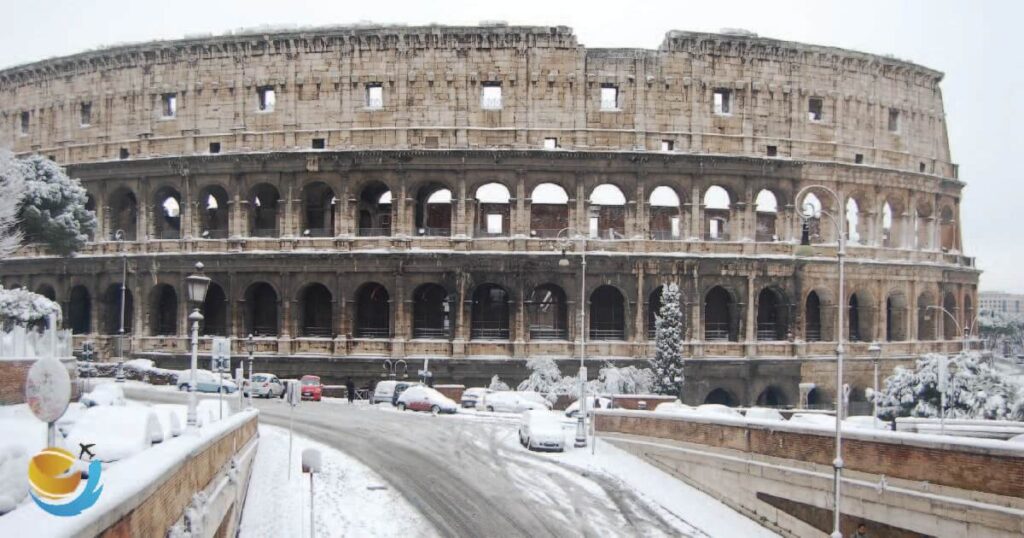
Does It Snow In Rome in Winters:
1: Winters in Rome are relatively mild compared to other European cities, but they can still be damp and chilly.
2: From December to February, average temperatures range from 7°C to 15°C (45°F to 59°F).
3: Rainfall is more frequent during the winter months, with occasional showers and overcast skies.
4: While snowfall is rare, it is not unheard of, particularly in the surrounding hills and occasionally in the city center.
Does It Snow In Rome in Spring and Autumn:
1: Spring (March to May) and autumn (October to November) offer mild, pleasant weather in Rome.
2: Temperatures gradually warm up in spring, with blooming flowers and greenery adding to the city’s charm.
3: Autumn brings cooler temperatures and the occasional rain shower, but it is still a favorable time to visit Rome, with fewer crowds and comfortable weather for sightseeing.
Overall Climate Characteristics of Does It Snow In Rome:
1: Rome enjoys a relatively stable climate throughout the year, with temperature variations influenced by seasonal changes.
2: The city benefits from its Mediterranean location, which mitigates extreme temperature fluctuations.
3: While summers can be hot and humid, and winters occasionally damp and cool, Rome’s climate generally lends itself well to outdoor activities and cultural exploration year-round.
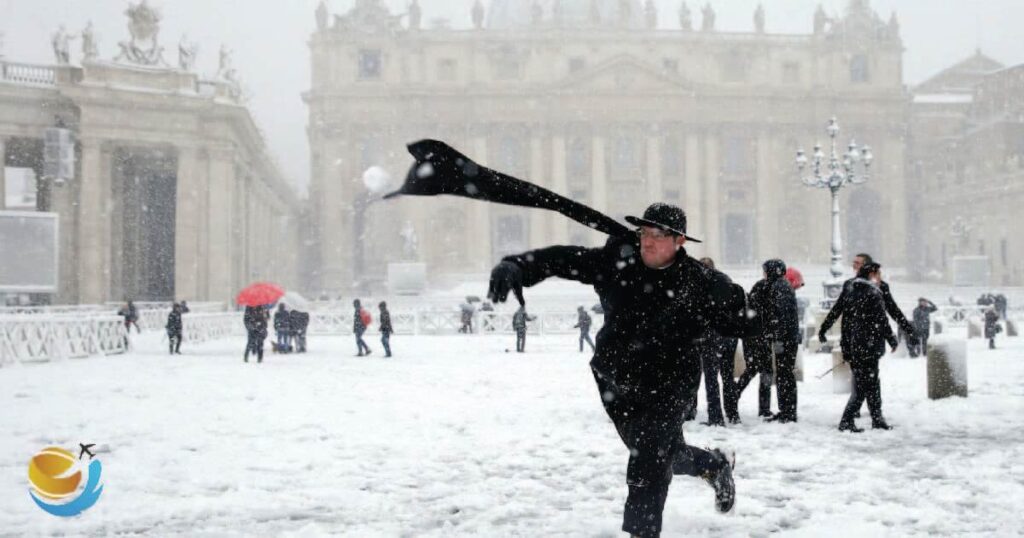
B: Historical Snowfall in Rome:
Throughout its storied history, Rome has experienced sporadic but memorable snowfall events, often weaving a magical veil over its ancient streets and iconic landmarks.
While snow is not a common occurrence in the Eternal City, the moments when it does grace Rome with its presence leave lasting impressions on its inhabitants and visitors alike.
Early Records:
Historical accounts dating back centuries offer glimpses of snowfall events in Rome, although they were relatively rare occurrences compared to regions with colder climates.
Early Roman writers, such as Pliny the Elder, made note of snowfall in their works, depicting it as a novel and sometimes wondrous phenomenon.
Notable Snowfall Events:
February 2012: In a particularly memorable event, Rome was blanketed by a rare snowfall, transforming its landscape into a winter wonderland. The Colosseum, St. Peter’s Square, and other famous sites were adorned with a layer of pristine snow, offering a surreal contrast to their ancient grandeur.
Winter of 1956: Another significant snowfall event occurred in 1956 when Rome experienced a rare snowstorm that paralyzed the city and disrupted daily life. The unexpected accumulation of snow caught residents off guard, leading to transportation delays and other challenges.
Cultural Significance:
While snowfall in Rome may be infrequent, it holds cultural significance for its inhabitants and has been immortalized in art, literature, and folklore.
Snowfall often evokes a sense of wonder and nostalgia, prompting Romans to embrace the rare opportunity to experience winter’s beauty in their beloved city.
Historical Context of Does It Snow In Rome:
Understanding the historical context of snowfall in Rome requires considering climatic variations over time and the city’s geographical location within the Mediterranean region.
While snow is not a regular occurrence in Rome, its occasional presence underscores the city’s adaptability to diverse weather patterns throughout its history.
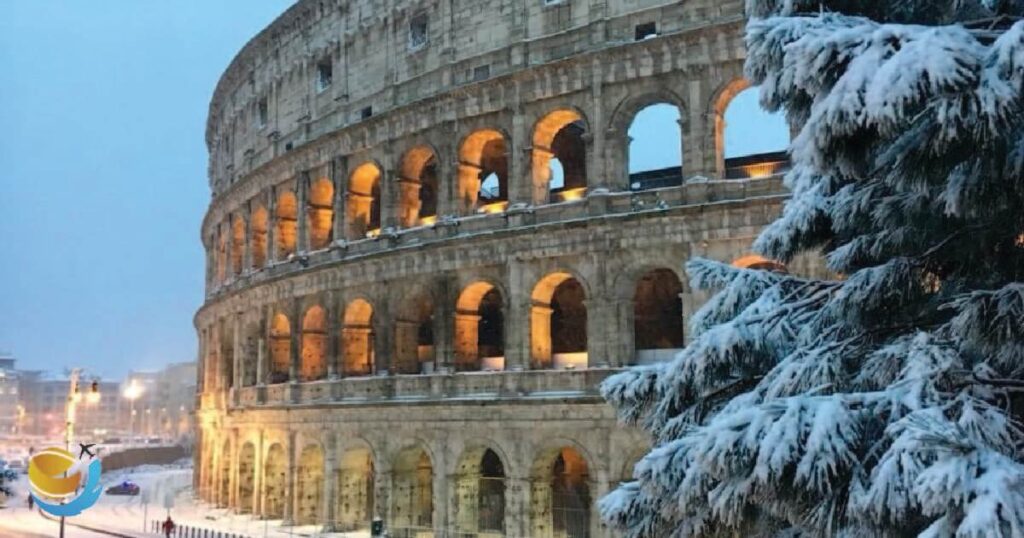
Impact on Rome’s Landscape:
Snowfall in Rome can have a transformative effect on the city’s landscape, casting its ancient monuments and modern architecture in a new light.
The juxtaposition of snow against Rome’s historic backdrop creates picturesque scenes that attract photographers, artists, and tourists from around the world.
In summary, while snowfall in Rome may be rare, its historical occurrences leave an indelible mark on the city’s collective memory, serving as reminders of nature’s unpredictability and Rome’s enduring allure.
C: Frequency and Intensity of Does It Snow In Rome:
In the context of Rome’s Mediterranean climate, snowfall is a relatively rare phenomenon, occurring sporadically and often infrequently. However, when snow does descend upon the Eternal City, it captivates the hearts of its inhabitants and transforms its familiar landscape into a scene of ethereal beauty.
Frequency: Does It Snow In Rome
1: Snowfall in Rome is uncommon, with significant accumulations occurring only once every few years on average.
2: While light flurries may occur more frequently during the winter months, substantial snowfall events are relatively rare occurrences.
3: Historical records indicate that major snowfall events in Rome tend to occur at irregular intervals, often separated by several years or even decades.
Intensity: Does It Snow In Rome
1: When snow does fall in Rome, its intensity can vary widely, ranging from light dustings to more substantial accumulations.
2: Intense snowfall events, characterized by heavy snowfall rates and significant accumulations, are less common but not unheard of in Rome’s history.
3: The intensity of snowfall in Rome is influenced by various factors, including temperature, humidity, and atmospheric conditions, which can vary from one event to another.
Regional Variations: Does It Snow In Rome
1: Snowfall patterns in Rome may exhibit regional variations, with areas at higher elevations, such as the surrounding hills, experiencing more frequent and intense snowfall compared to the city center.
2: The presence of hills and mountains surrounding Rome can contribute to localized variations in snowfall intensity and accumulation, with some areas receiving more snow than others during a given event.
Impact and Response: Does It Snow In Rome
1: While snowfall in Rome may be a rare occurrence, it can have significant impacts on the city’s infrastructure, transportation systems, and daily life.
2: Authorities and residents in Rome typically respond to snowfall events by implementing measures to ensure public safety, including clearing roads, sidewalks, and public spaces, and adjusting transportation schedules as needed.
In conclusion, while snowfall in Rome may be infrequent and variable in intensity, its occasional presence adds a touch of enchantment to the city’s storied landscape and serves as a reminder of nature’s diversity and unpredictability.
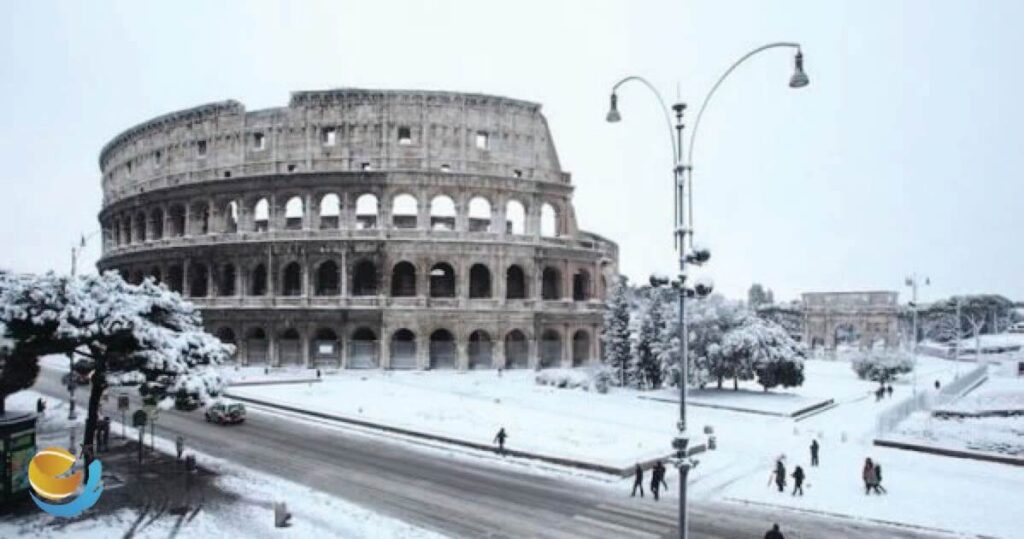
D: Climate Change and Snowfall Patterns of Does It Snow In Rome:
As the global climate continues to undergo rapid changes, the patterns of snowfall in regions around the world, including Rome, are being impacted. While Rome’s Mediterranean climate typically results in limited snowfall, the effects of climate change are altering this historical norm and may lead to significant shifts in snowfall patterns in the future.
Warming Temperatures:
1: One of the primary impacts of climate change in Rome is the trend toward warmer temperatures, particularly during the winter months.
2: Rising global temperatures can reduce the likelihood of snowfall in Rome by increasing the frequency of milder weather conditions that are less conducive to snow formation and accumulation.
Altered Atmospheric Circulation:
1: Changes in atmospheric circulation patterns due to climate change can influence the distribution of precipitation, including snowfall, in regions like Rome.
2: Shifts in atmospheric circulation may lead to variations in the timing, intensity, and duration of snowfall events, potentially affecting the frequency and magnitude of snowfall in the city.
Increased Extreme Weather Events:
1: Climate change can also contribute to an increase in extreme weather events, including intense precipitation events and storms, which may result in more significant snowfall events in Rome.
2: While extreme snowfall events may become more frequent under certain climate change scenarios, they may also be accompanied by other extreme weather phenomena, such as heavy rainfall and flooding, posing additional challenges for the city.
Adaptation and Mitigation Strategies:
1: In response to the potential impacts of climate change on snowfall patterns, authorities in Rome may need to implement adaptation and mitigation strategies to minimize risks and protect the city’s infrastructure and residents.
2: These strategies may include measures to improve snow removal and emergency response capabilities, as well as initiatives to reduce greenhouse gas emissions and mitigate the drivers of climate change on a global scale.
Scientific Research and Monitoring:
1: Ongoing scientific research and monitoring efforts are essential for understanding the complex interactions between climate change and snowfall patterns in Rome and developing effective strategies for adaptation and resilience.
2: By studying historical climate data, modeling future climate scenarios, and monitoring current weather patterns, scientists can provide valuable insights into the potential impacts of climate change on snowfall in Rome and inform decision-making processes.
In summary, climate change is likely to have profound implications for snowfall patterns in Rome, potentially leading to shifts in the frequency, intensity, and distribution of snowfall events in the future.
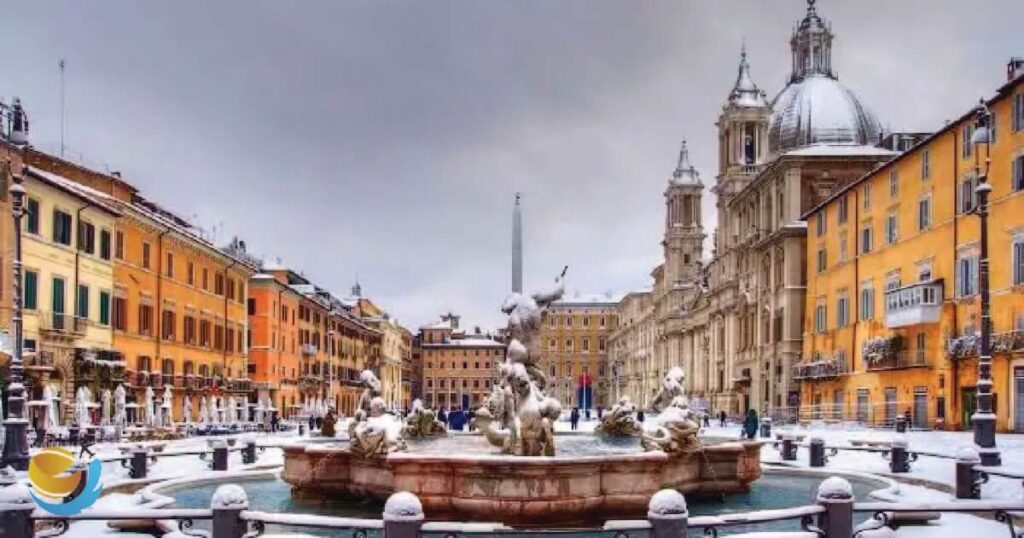
As the city grapples with the challenges posed by a changing climate, proactive measures will be crucial for building resilience and ensuring the well-being of its inhabitants in the face of evolving snowfall patterns.
Conclusion of Does It Snow In Rome:
Snow in Rome is rare but special. It adds magic to the city’s ancient beauty. We’ve learned about Rome’s weather, its history of snow, and how climate change might affect snow in the future.
As we look ahead, Rome may face new challenges because of climate change. But with preparation and care, the city can stay strong. Snow in Rome is more than just weather it’s a part of the city’s story. Whether it snows or not, Rome will always be a timeless place that captures our hearts.
Related Articles:
Catalina Island Beaches: Top 5 Beach Destinations
Jackson Hole Hot Springs: 4 Top Hot Springs In Jackson Hole
Hot Springs Southern California: 7 Top Hot Springs
Santo Domingo Beaches: Top Beach Destinations in Santo Domingo

